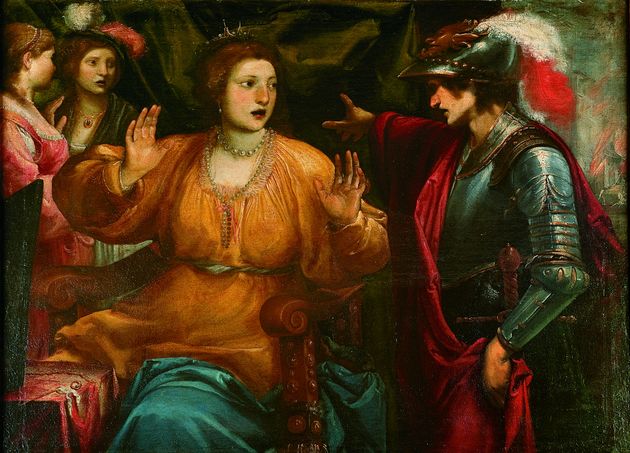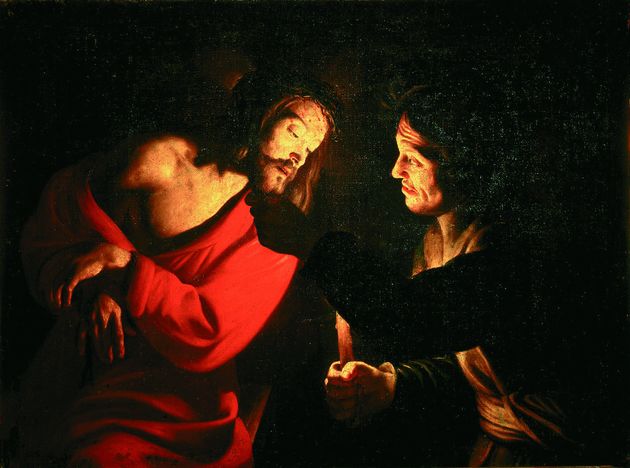The altarpiece was painted between 1572 and 1573 and was commissioned by Andrea Verzoni and Francesco Guizzelmi, governors of the Company of Archangel Raphael, for an altar in the oratory of the Company, which stood beside the church of Sant’Agostino and was transformed into a private house in 1794. It was Poppi’s most fortunate moment of career, after having decorated the study of Francis I de’ Medici in Florence, Palazzo Vecchio, with Giorgio Vasari and the other Mannerist painters.
Using a fresh, simple composition, where the figures of the two protagonists stand clearly out from a sketchy background coastal landscape, Poppi depicts a serenely hopeful scene, dominated by the everyday sentiments of affection conveyed in the interplay of glances of the sweet little dog preceding the group, of Raphael watching attentively over Tobias, and of Tobias looking tenderly towards the viewer. The archangel is holding out the vessel containing the miraculous bile which will cure Tobias’ father of his blindness, while Tobias is holding the fish from which the bile has been extracted. But the painter’s attention is attracted to the rich ornaments of the garments; these are embellished with pearl embroideries, sophisticated colour schemes and bold iridescent effects which are aimed at enhancing the almost dance-like sinuosity of the bodies.
Poppi’s eclectic ability is here masterfully documented in his highly personal synthesis of the elements of grand Florentine Mannerism. The light poses and billowing robes of Andrea Sarto are here, as are the virtuoso acid colour schemes of Pontormo, and the red, vibrant locks peculiar to Rosso Fiorentino.
Considering the very few surviving works by Poppi, it is an exceptional fact that besides Tobias and the angel Prato boasts another large altarpiece by this master, the Crucifix adored by St. Thomas and the Saints Paul and Anthony, painted in 1590 for the church of San Domenico, showing the transition to a more monumental rendering of the figures, typical of the artist’s late career, and an ulterior big Crucifixion painted on canvas, from the suppressed church of St. Jacobus church and now displayed in Palazzo Comunale.






























